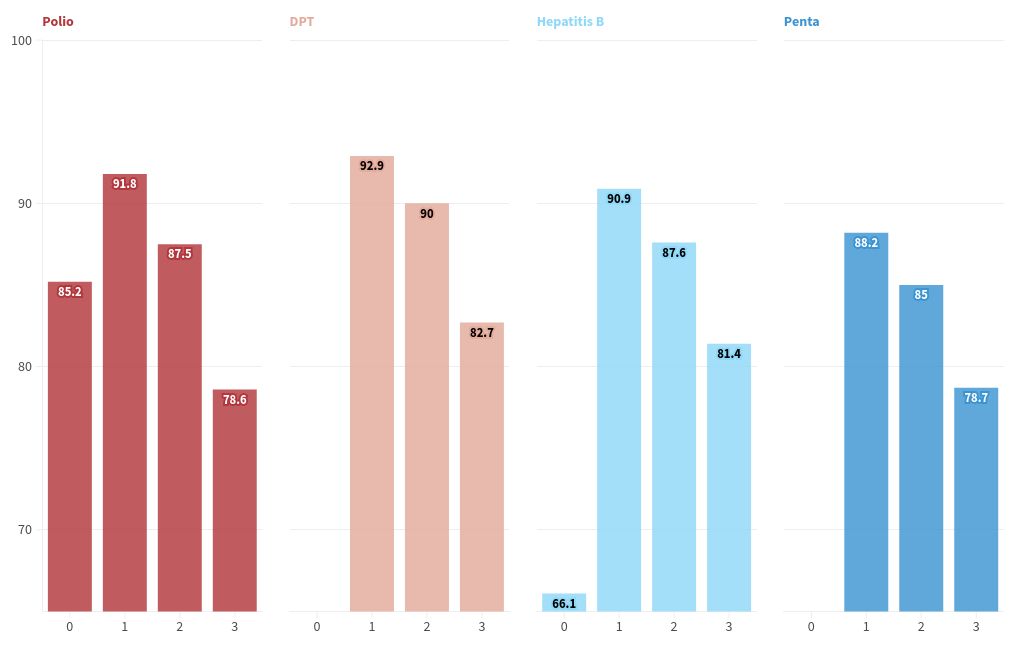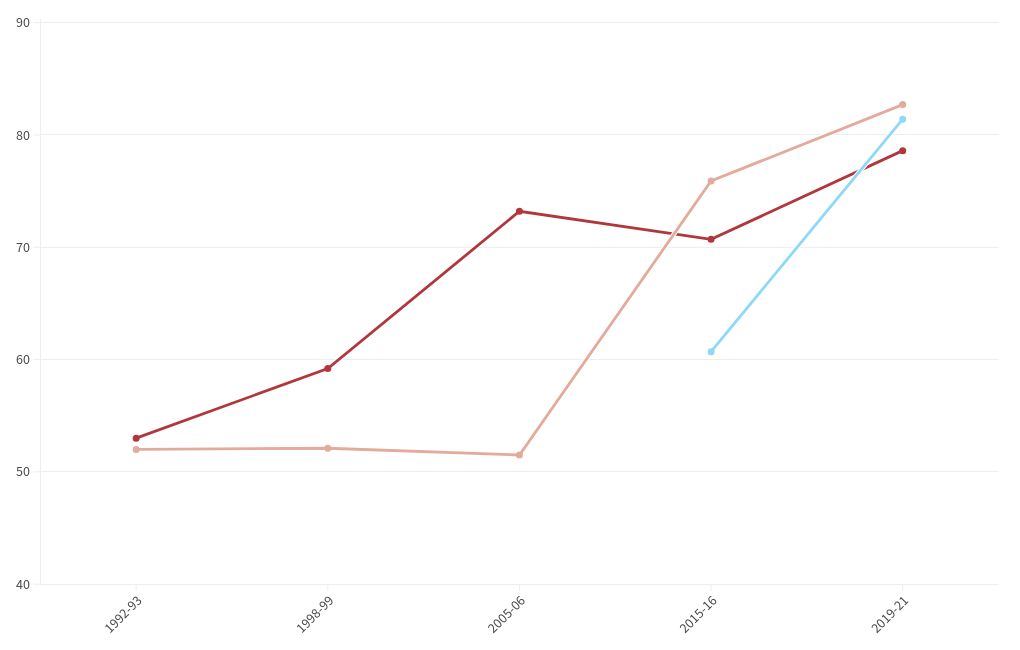India is getting complacent in its fight against polio: Data
Pulse polio drops being administered to a child in government women and child hospital at Palakkad.
| Photo Credit: K.K. Mustafah
Data from the National Family Health Surveys show that the pace of administration of the polio vaccine has slowed down in India. Coverage of the last dose remains relatively poor. Coverage levels are poorest in the north-east, where the latest case of vaccine-derived polio was detected in a two-year-old child in Tikrikilla village in the West Garo Hills of Meghalaya. Notably, coverage was lowest among the poorest households where the education levels of the female head of the family were not advanced.
While the last case of wild poliovirus in India was recorded in 2011, rare cases of vaccine-derived poliovirus continue to be reported. Though the government has clarified that the latest case is vaccine-derived, it is unclear whether it is a case of iVDPV (immunodeficiency-related vaccine-derived poliovirus), affecting just that one child, or circulating vaccine-derived poliovirus (cVDPV), which can impact the entire community.
The World Health Organization has said, “The problem is not with the vaccine itself, but with low vaccination coverage. If a population is fully immunised, they will be protected against both vaccine-derived and wild polioviruses… Circulating VDPVs occur in places where routine or supplementary immunisation activities are poorly conducted.”
Chart 1 shows the share of children (12-23 months) who received various doses of specific vaccines by the appropriate age in 2019-21.

Charts appear incomplete? Click to remove AMP mode.
Coverage of the last dose of the polio vaccine was lowest among the four select vaccine types — polio, DPT (Diphtheria-Tetanus-Pertussis), Hepatitis B, and Pentavalent (protects against five diseases) — administered in India. While coverage of the first three doses of the polio vaccine was comparable to others, coverage of the last dose lagged behind the rest.
Editorial | Intriguing silence: On the case of polio in India, delayed official response
This has not always been the case. Coverage of the last dose of the polio vaccine was much higher than coverage of the last dose of the DPT vaccine in 1992-93, 1998-99, and 2005-06, and higher than that of the Hepatitis-B vaccine in 2015-16. However, in 2019-21, coverage of the last doses of the DPT and Hepatitis-B vaccines surpassed that of the polio vaccine. This hints at the possibility that India has become complacent in its fight against polio, possibly after it was declared polio-free (in 2014).
Chart 2 shows the share of Indian children (12-23 months) who received the last dose of specific vaccines by the appropriate age across years.

Table 3 shows the share of children (12-23 months) who received the last dose of the polio vaccine in 2019-21, based on their household’s background characteristics.

There is no notable variation in coverage based on gender, residence, and caste. However, the education level of the mother played a vital part — coverage increased as her education levels increased. The wealth of a household also played a significant part — coverage among the poorest households lagged behind the others. There was no difference in coverage between the middle class and the rich. Coverage was also low among Muslim households.
Map 4 shows the State-wise share of children (12-23 months) who received the last dose of the polio vaccine in 2019-21.

Coverage lagged behind in the north-eastern States and in Uttar Pradesh. Odisha, Tamil Nadu, West Bengal and Himachal Pradesh recorded over 90% of coverage for the last dose, while Nagaland, Meghalaya, Arunachal Pradesh, Assam, Tripura and Uttar Pradesh recorded less than 75% coverage.
Inputs from Muhammad Ubaidullah A.L., Mohamed Althamish N.A, who, along with R. Amanda Fernandez, are interning with The Hindu Data team
Source: National Family Health Survey
vignesh.r@thehindu.co.in
Also read: Indians who migrate abroad see incomes double; residents need 20 years to catch up | Data
Images are for reference only.Images and contents gathered automatic from google or 3rd party sources.All rights on the images and contents are with their legal original owners.



Comments are closed, but trackbacks and pingbacks are open.